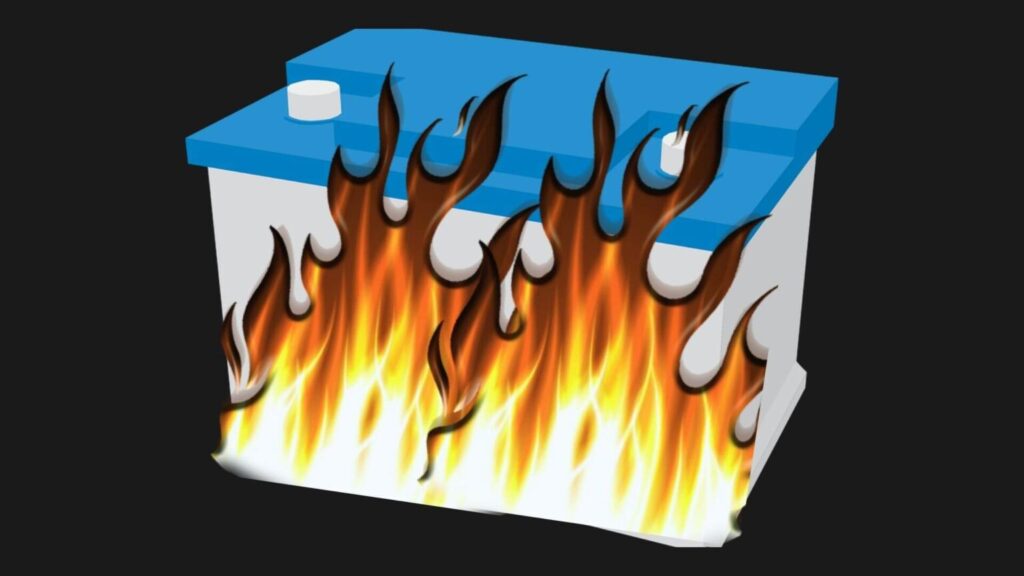Lithium battery explosions are typically caused by a combination of chemical, thermal, and mechanical factors. Here are the primary causes.
1. Thermal Runaway
- Definition: Thermal runaway occurs when the battery’s temperature rises uncontrollably. This creates a positive feedback loop where heat generation increases the reaction rate, causing even more heat to be produced.
- Causes: Overcharging, internal short circuits, or external heating can lead to thermal runaway. When the temperature of the battery rises above a certain threshold, the electrolyte inside can break down, releasing gases, which can lead to an explosion.
2. Overcharging
- Definition: Overcharging happens when a lithium-ion battery is charged beyond its recommended voltage limit.
- Causes: Improper charging equipment or malfunctioning battery management systems (BMS) can result in overcharging. This can lead to excessive heat buildup, gas formation, and potential explosion.
3. Internal Short Circuit
- Definition: An internal short circuit occurs when the anode and cathode come into direct contact, bypassing the separator that’s supposed to keep them apart.
- Causes: Manufacturing defects, physical damage, or dendrite formation (tiny metal fibers that can grow inside the battery) can puncture the separator, causing a short circuit that generates heat and can ignite the electrolyte.
4. External Short Circuit
- Definition: External short circuits occur when the battery’s terminals are bridged, creating a direct current path.
- Causes: Mishandling (e.g., placing the battery near metal objects like coins or keys), physical damage, or moisture can cause this type of short circuit, leading to rapid discharge and overheating.
5. Overheating (High Temperatures)
- Definition: Exposure to high temperatures can cause chemical instability inside the battery.
- Causes: High ambient temperatures or excessive use without cooling mechanisms can lead to overheating. If the battery temperature rises beyond safe limits, it can cause the electrolyte to break down and produce flammable gases.
6. Physical Damage
- Definition: Any physical deformation of the battery can compromise the integrity of its internal components.
- Causes: Dropping the battery, puncturing it, or any form of mechanical damage can cause internal short circuits or breaches in the electrolyte, leading to an explosion or fire.
7. Poor Manufacturing Quality
- Definition: Poorly manufactured batteries may have defects in the electrodes, separators, or other components that make them more prone to failure.
- Causes: Inconsistent quality control during manufacturing can lead to issues such as misaligned layers, contamination, or thin separators, all of which can cause dangerous malfunctions.
8. Improper Charging or Discharging
- Definition: Charging or discharging at rates that exceed the battery’s design limits can stress the internal components.
- Causes: Using the wrong charger, or draining the battery too quickly, can generate heat and cause internal damage, leading to potential ignition or explosion.
By using proper battery management systems, avoiding physical damage, and ensuring proper charging protocols, the risk of lithium battery explosions can be minimized.


